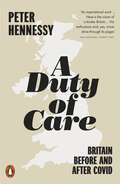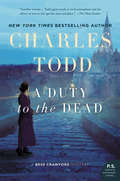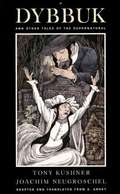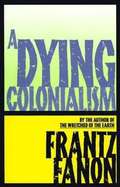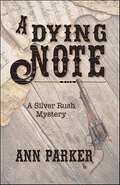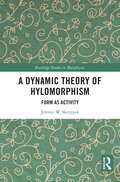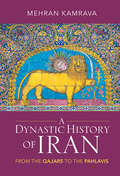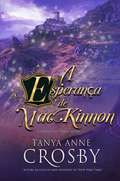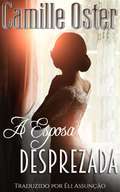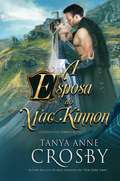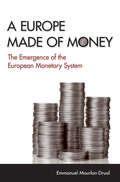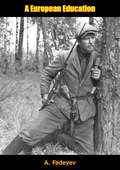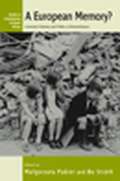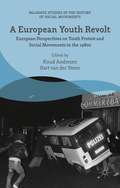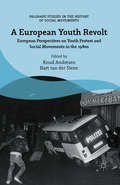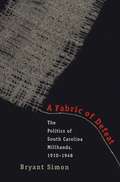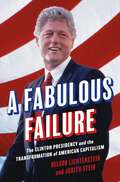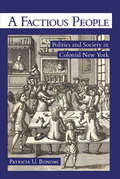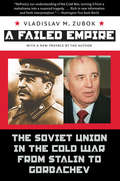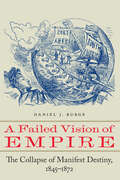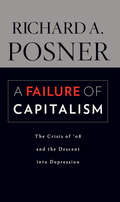- Table View
- List View
A Duty of Care: Britain Before and After Covid
by Peter HennessyOne of our most celebrated historians shows how we can use the lessons of the past to build a new post-covid society in BritainThe 'duty of care' which the state owes to its citizens is a phrase much used, but what has it actually meant in Britain historically? And what should it mean in the future, once the immediate Covid crisis has passed?In A Duty of Care, Peter Hennessy divides post-war British history into BC (before covid) and AC (after covid). He looks back to Sir William Beveridge's classic identification of the 'five giants' against which society had to battle - want, disease, ignorance, squalor and idleness - and laid the foundations for the modern welfare state in his wartime report. He examines the steady assault on the giants by successive post-war governments and asks what the comparable giants are now. He lays out the 'road to 2045' with 'a new Beveridge' to build a consensus for post-covid Britain with the ambition and on the scale that was achieved by the first.
A Duty to the Dead (Bess Crawford Mysteries #1)
by Charles ToddFrom the brilliantly imaginative New York Times bestselling author Charles Todd comes an unforgettable new character in an exceptional new series England, 1916. Independent-minded Bess Crawford's upbringing is far different from that of the usual upper-middle-class British gentlewoman. Growing up in India, she learned the importance of responsibility, honor, and duty from her officer father. At the outbreak of World War I, she followed in his footsteps and volunteered for the nursing corps, serving from the battlefields of France to the doomed hospital ship Britannic. On one voyage, Bess grows fond of the young, gravely wounded Lieutenant Arthur Graham. Something rests heavily on his conscience, and to give him a little peace as he dies, she promises to deliver a message to his brother. It is some months before she can carry out this duty, and when she's next in England, she herself is recovering from a wound. When Bess arrives at the Graham house in Kent, Jonathan Graham listens to his brother's last wishes with surprising indifference. Neither his mother nor his brother Timothy seems to think it has any significance. Unsettled by this, Bess is about to take her leave when sudden tragedy envelops her. She quickly discovers that fulfilling this duty to the dead has thrust her into a maelstrom of intrigue and murder that will endanger her own life and test her courage as not even war has.
A Dwarf Kingdom (The Henri Castang Mysteries)
by Nicolas FreelingThe final Henri Castang mystery confirms the Edgar award–winning author’s “mastery of character and imagery in a superlative study of people and power (Publishers Weekly, starred review).After the murder of dear friends and an attack on his wife, Vera, Inspector Henri Castang is finished with life as an investigator. As the couple settles into an inherited cliff-top home in Biarritz, Castang is just starting to wonder if retirement suits him when his only grandchild is kidnapped, sending him on a terrifying chase that is all too personal. With the local police stunted by politics, it’s up to Castang to catch this perp—and he will. Even if it’s the last thing he ever does . . . Praise for Nicolas Freeling:“In depth of characterization, command of language and breadth of thought, Mr. Freeling has few peers when it comes to the international policier.” —The New York Times“Nicolas Freeling . . . liberated the detective story from page-turning puzzler into a critique of society and an investigation of character.” —The Daily Telegraph“Freeling rewards with his oblique, subtly comic style.” —Publishers Weekly“Freeling writes like no one. . . . He is one of the most literate and idiosyncratic of crime writers.” —Los Angeles Times
A Dybbuk
by Joachim Neugrochel Tony KushnerKushner's imaginative retelling of the classic mystical legend, The Dybbuk, by S. Ansky, the noted Russian and Yiddish-language folklorist, novelist and dramatist. Ansky formed an expedition which roamed throughout the Ukraine to preserve and collect Hasidic folktales. The Dybbuk was a product of that journey. Written before the outbreak of World War I, it wasn't produced until 1920, shortly after Ansky's death. It has been much-produced worldwide ever since.
A Dying Colonialism
by Frantz Fanon Haakon ChevalierPsychiatrist, humanist, revolutionary, Frantz Fanon was one of the great political analysts of our time, the author of such seminal works of modern revolutionary theory as The Wretched of the Earth and Black Skin, White Masks. He has had a profound impact on civil rights, anticolonialism, and black consciousness movements around the world. <p><p> A Dying Colonialism is Fanon's incisive and illuminating account of how, during the Algerian Revolution, the people of Algeria changed centuries-old cultural patterns and embraced certain ancient cultural practices long derided by their colonialist oppressors as "primitive," in order to destroy those oppressors. Fanon uses the fifth year of the Algerian Revolution as a point of departure for an explication of the inevitable dynamics of colonial oppression. This is a strong, lucid, and militant book; to read it is to understand why Fanon says that for the colonized, "having a gun is the only chance you still have of giving a meaning to your death."
A Dying Note (Silver Rush Mysteries #6)
by Ann ParkerBest of the West 2019 - 1st Place in Mystery by True West Magazine2018 - CIPA EVVY Winner for Mystery/Crime/Detective2018 - CIPA EVVY 2nd Place for Historical FictionIn the next book in the Silver Rush mysteries, Inez Stannert struggles to solve the murder of a young musician. But in finding answers, she unwittingly opens the door to her dark past…It's autumn of 1881, and Inez Stannert is settled in San Francisco with her young ward, Antonia Gizzi. Inez has turned her business talents to managing a music store, working closely with a celebrated local violinist. The music notes of her new life are aligning perfectly…Until the badly beaten body of a young musician washes up on the filthy banks of San Francisco's Mission Creek canal. Inez and Antonia become entangled in the mystery of his death when the musician turns out to have connections that threaten to expose Inez's notorious past. And while Inez is willing to play "madam detective" to protect herself, she isn't the only one searching for answers. San Francisco detective Wolter Roeland de Bruijn has also been tasked with ferreting out the perpetrators and dispensing justice in its most final form.In this thrilling addition to the Silver Rush mystery series, time grows short as Inez races to solve the murder of a young musician. But her investigation uncovers long-hidden secrets and unsettled scores. With lives and reputations on the line, the tempo rises until the investigation's final, dying note.The critically acclaimed and award-winning Silver Rush mystery series is:Perfect for fans of Rhys Bowen and Sandra DallasFor readers who enjoy historical fiction and Western themed mysteriesOther Titles in the Silver Rush Mysteries Series:Silver LiesIron TiesLeaden SkiesWhat Gold BuysA Dying NoteMortal Music
A Dynamic Theory of Hylomorphism: Form as Activity (Routledge Studies in Metaphysics)
by Jeremy W. SkrzypekThis book introduces a novel hylomorphic theory of material objects, according to which material objects are understood as comprised or composed of both matter and activity, where activity plays the role of form. This theory, “hyloenergeism,” captures the dynamic nature of many of the objects of our experience, such as living organisms, better than other leading varieties of contemporary hylomorphism.Hylomorphism is the theory according to which material objects are understood as comprised or composed of two fundamental parts, components, aspects, or principles: matter and form. Many contemporary hylomorphists endorse a version according to which the form of a material object is understood as a certain kind of complex relation or structure realized in its material parts. Others endorse a version according to which the form of a material object is understood as a certain kind of power or disposition continuously activated in the object or in its material parts. This book argues against structural and dispositional varieties of hylomorphism in favor of a third approach: hyloenergeism. Drawing on various aspects of traditional Aristotelian hylomorphism and other contemporary occurrence-based theories of material objects, it argues that hyloenergeism has the resources to successfully avoid or resolve several major concerns for other competing hylomorphic views.A Dynamic Theory of Hylomorphism will appeal to researchers and graduate students working in metaphysics, ancient philosophy, and medieval philosophy.
A Dynastic History of Iran: From the Qajars to the Pahlavis
by Mehran KamravaThis rich dynastic study examines the political histories of Iran's last two monarchical dynasties, the Qajars and the Pahlavis. Tracing the rise and fall of both dynasties, Mehran Kamrava addresses essential questions about how and why they rose to power; what domestic and international forces impacted them; how they ruled; and how they met their end. Exploring over two hundred years of political history, Kamrava's comprehensive yet concise account places developments within relevant frameworks in an accessible manner. With detailed examinations of Iran's history, politics, and economics, he interrogates the complexities of dynastic rule in Iran and considers its enduring legacy. Developing innovative interpretations and utilizing original primary sources, this book illuminates the impact of the monarchy's rule and ultimate collapse on Iranian history, as well as Iran's subsequent politics and revolution.
A Esperança de MacKinnon
by Tanya Anne Crosby Tânia NezioEste é o epílogo que faltava para o livro "A Noiva de MacKinnon" – observe que este não é um romance. É um "super epílogo," escrito para acompanhar o livro. Onze anos depois, Hugh FitzSimon é um homem alquebrado. Ele está abandonado, um ser amaldiçoado deixado para viver sozinho com o seu sofrimento. Um avarento para se rivalizar com Ebeneezer, ele é visitado pelo fantasma de sua esposa morta, que veio lhe relembrar o que tinha sido a sua vida, e o que poderia vir a ser, e onde ele vai acabar se a vela se apagar antes que FitzSimon possa reparar seus erros. Enquanto isso, nas Highlands, o Clã MacKinnon enfrenta seus momentos mais escuros. Com sua aldeia destruída pelo fogo e com o inverno chegando, como eles podem se reerguer quando os sussurros de guerra já começaram? Aos 17 anos, Malcolm MacKinnon perdeu o rumo, mas um "fantasma" inesperado pode lhe ajudar a encontrá-lo. Durante anos, os fãs pediram um epílogo para o livro "A Noiva de MacKinnon" e aqui está ele, uma deliciosa estória para dar um pouco de alegria aos feriados.
A Espia Real (Her Royal Spyness #Volumen 1)
by RHYS BOWENO primeiro volume de uma nova série de cosy crime com um toque de regency que vai deliciar os leitores e que todos vão querer conhecer! O seu nome completo é Lady Victoria Georgiana Charlotte Eugenie (Georgie para os amigos), filha do duque de Glen Garry e Rannoch. Em 34.° lugar na linha de sucessão ao trono, aprendeu pouquíssimas coisas úteis na vida, entre as quais como fazer uma vénia perfeita. E está completamente falida.Quando o irmão lhe corta o rendimento e a tenta convencer a casar com um príncipe romeno «com cara de peixe», Georgie vê-se forçada a abandonar a Escócia e a fugir para Londres, onde: 1 - trabalha ao balcão de uma loja de cosméticos, para de lá ser despedida cinco horas depois; 2 - se apaixona por um muito inapropriado membro menor da realeza (tão falido quanto ela);3 - arranja algum dinheiro como empregada doméstica (incógnita, claro); 4 - finalmente, é convocada pela Rainha de Inglaterra para ser espia do seu filho mais velho, o príncipe de Gales. Como se não bastasse tudo isto, o francês arrogante que reivindicara a posse da propriedade ancestral da família de Georgie aparece morto na sua banheira. Agora, o trabalho mais importante que tem pela frente é tentar limpar o comprido nome de família. Os elogios da crítica: «Brilhante e muito mais do que um policial. Combina uma história de amor, comentários sociais, humor e perigo. E é maravilhoso.» - Louise Penny «Uma heroína cativante, personagens peculiares e muita diversão. Os disparates e loucuras de Georgie deixarão o leitor ansioso pelo próximo livro da série.» - Publishers Weekly«Rhys Bowen, vencedora do Agatha Award, apresenta-nos uma protagonista fantástica. A melhor parte é a evocação da Inglaterra dos anos 1930 e o retrato vívido de como seria o quotidiano de uma jovem mulher que queria ir contra a tradição, no período entre duas guerras mundiais. Incrivelmente divertido.» - Booklist «A boa disposição de Georgie e a prosa leve e divertida da autora são absolutamente viciantes.» - The Denver Post«Uma combinação perspicaz de mistério, sátira e comédia.» - Jacqueline Winspear «Personagens maravilhosas... Uma delícia.» - Charlaine Harris «O livro perfeito para os viciados em Downton Abbey.» - Deborah Crombie
A Esposa Desprezada
by Camille OsterA Londres Vitoriana é um lugar cruel para uma divorciada, mas devido a morte do amado segundo marido de Sophie Duthie, ela agora é uma viúva, e, pela primeira vez em sua vida, uma mulher independente. Ela pode não ter muitos meios, mas com a ajuda da sua loja de música, ela pode sustentar a si e ao seu filho, Alfie. Mesmo que o seu segundo casamento tenha sido feliz, para Sophie já basta de maridos. O primeiro a ensinou que contos de fadas são apenas ilusões. Para lorde Aberley, a ex-mulher não é nada mais que uma pária ardilosa. Infelizmente, seu noivado subsequente não deu muito certo – não que alguma vez tivesse tido grandes ilusões quanto ao casamento. É algo que agora ele quer evitar a todo custo, mas acontece que ele precisa de um herdeiro. É o único dever que ele não pode negligenciar, então ao saber que o filho da ex-mulher tem seis anos de idade, fica com sérias dúvidas sobre a paternidade do menino. Ver a criança apenas confirma as suas suspeitas. Alfie Duthie é seu filho.
A Esposa Secreta: Romance medieval (Montfault #2)
by Camila WinterA Esposa Secreta por Camila Winter Saga medieval Saga medieval, história de amor e mistério A Esposa Ssecreta Uma mulher misteriosa chega ao castelo de Saint Denis, no coração do Languedoc, exigindo ver o Conde de Rennes e Hainaut. Ela afirma ser sua esposa, mas o conde pensa que a pobre mulher enlouqueceu porque ela chega usando um hábito puído e conta uma história muito estranha: ela não é sua esposa, sua esposa morreu há anos e ainda assim algo no rosto daquela freira perturbada chama a atenção do Conde de Rennes, algo dolorosamente familiar: É a dama da torre, a esposa secreta, aquela que cativou o seu coração nos seus primeiros anos ou ela é apenas uma impostora do mal? Gênero: FICÇÃO / Romance / Histórico / Medieval
A Esposa do MacKinnon
by Tanya Anne Crosby Elaine MoreiraDescendente dos poderosos filhos de MacAlpin, Iain MacKinnon não se curvará de jeito nenhum aos ingleses. Mas quando seu jovem filho é capturado, o feroz líder escocês promete que nada o impedirá de resgatar o menino. Revidando na mesma moeda, ele captura a filha de seu inimigo com intenção de barganhar uma troca. A filha de FtizSimon passou toda a vida à sombra do homem que chamava de pai -- porém, ela jamais imaginou que ele renegaria a única filha. Mesmo culpando seu captor por trair o acordo feito com seu pai, Page suspeita da verdade... As sombras guardam segredos. Agora, apenas o amor de um relutante campeão pode salvar a esposa do MacKinnon. Esse livro dá início à série "Esposas das Terras Altas".
A Estados Unidos por mar (¡Arriba la Lectura!, Level S #18)
by Brian Moses Tom McNeelyAnya, Micah y su madre zarpan hacia Estados Unidos en el Lusitania. Cuando su madre se enferma a bordo, Anya se hace amiga del Sr. Krinsky, quien la ayuda a cuidarla hasta que se repone. Pero cuando lleguen a Estados Unidos y Anya esté enferma, ¿a quién podrá pedir ayuda la familia? NIMAC-sourced textbook
A Europe made of money: the emergence of the European Monetary System
by Emmanuel Mourlon-DruolA Europe Made of Money is a new history of the making of the European Monetary System (EMS), based on extensive archive research. Emmanuel Mourlon-Druol highlights two long-term processes in the monetary and economic negotiations in the decade leading up to the founding of the EMS in 1979. The first is a transnational learning process involving a powerful, networked European monetary elite that shaped a habit of cooperation among technocrats. The second stresses the importance of the European Council, which held regular meetings between heads of government beginning in 1974, giving EEC legitimacy to monetary initiatives that had previously involved semisecret and bilateral negotiations. The interaction of these two features changed the EMS from a fairly trivial piece of administrative business to a tremendously important political agreement.The inception of the EMS was greeted as one of the landmark achievements of regional cooperation, a major leap forward in the creation of a unified Europe. Yet Mourlon-Druol's account stresses that the EMS is much more than a success story of financial cooperation. The technical suggestions made by its architects reveal how state elites conceptualized the larger project of integration. And their monetary policy became a marker for the conception of European identity. The unveiling of the EMS, Mourlon-Druol concludes, represented the convergence of material interests and symbolic, identity-based concerns.
A European Education
by Romain GaryA NOVEL OF DESPERATE LOVE, BITTER HOPE, CHILLING COURAGE AND RELENTLESS BRAVERY“THIS quietly terrible parable for our times was first published in France fifteen years ago and was awarded the Prix de Critiques. It was translated into fourteen languages, but not into English. Since then M. Gary has won international fame with several other books. Now an entirely rewritten and, M. Gary hopes, a much improved version of A EUROPEAN EDUCATION is published in English for the first time.“A too hasty glance at A EUROPEAN EDUCATION might give the impression that no novel has ever borne a more sadly ironical title, because this is a story of innocence ‘educated’ in all the horrors and atrocities of modern war. But some of the graduates of the twentieth century’s school of despair learned something other than the subjects taught. They learned that man’s dream of freedom, of dignity and of love, is immortal; that his faith in a future without hatred cannot be destroyed.”—Orville Prescott in THE NEW YORK TIMES“A EUROPEAN EDUCATION is a story of unmitigated privation and terror. But it is also the story of the human heart’s triumph over evil even in the exercise of evil.“A EUROPEAN EDUCATION is about a group of partisans called the ‘green ones’ because they live in the forests of Poland. They hide in caves, steal food and sabotage every effort of the Germans.“Before the book ends, the hero has become a man; he has killed; he has learned how to steal without being caught, how to make friends with the Germans whom he intends to kill, and how to love.“The title is inherent in Janek’s bitter summing up of what he has learned; ‘...all this European education comes down to is to teach you how to find the courage to shoot a man who sits there with lowered head....’“This may not be Romain Gary’s most popular book, but it is a little masterpiece and may prove to be his.”—THE CHICAGO TRIBUNE
A European Memory?
by Małgorzata Pakier Bo StråthAn examination of the role of history and memory is vital in order to better understand why the grand design of a United Europe--with a common foreign policy and market yet enough diversity to allow for cultural and social differences--was overwhelmingly turned down by its citizens. The authors argue that this rejection of the European constitution was to a certain extent a challenge to the current historical grounding used for further integration and further demonstrates the lack of understanding by European bureaucrats of the historical complexity and divisiveness of Europe's past. A critical European history is therefore urgently needed to confront and re-imagine Europe, not as a harmonious continent but as the outcome of violent and bloody conflicts, both within Europe as well as with its Others. As the authors show, these dark shadows of Europe's past must be integrated, and the fact that memories of Europe are contested must be accepted if any new attempts at a United Europe are to be successful.
A European Youth Revolt: European Perspectives on Youth Protest and Social Movements in the 1980s (Palgrave Studies in the History of Social Movements)
by Knud Andresen Bart van der SteenA European Youth Revolt.
A European Youth Revolt: European Perspectives on Youth Protest and Social Movements in the 1980s (Palgrave Studies in the History of Social Movements)
by Bart van der SteenDuring the early 1980s, large parts of Europe were swept with riots and youth revolts. Radicalised young people occupied buildings and clashed with the police in cities such as Zurich, Berlin and Amsterdam, while in Great Britain and France, 'migrant' youths protested fiercely against their underprivileged position and police brutality. Was there a link between the youth revolts in different European cities, and if so, how were they connected and how did they influence each other? These questions are central in this volume. This book covers case studies from countries in both Eastern and Western Europe and focuses not only on political movements such as squatting, but also on political subcultures such as punk, as well as the interaction between them. In doing so, it is the first historical collection with a transnational and interdisciplinary perspective on youth, youth revolts and social movements in the 1980s.
A Fabric of Defeat
by Bryant SimonIn this book, Bryant Simon brings to life the politics of white South Carolina millhands during the first half of the twentieth century. His revealing and moving account explores how this group of southern laborers thought about and participated in politics and public power. Taking a broad view of politics, Simon looks at laborers as they engaged in political activity in many venues--at the polling station, on front porches, and on the shop floor--and examines their political involvement at the local, state, and national levels. He describes the campaign styles and rhetoric of such politicians as Coleman Blease and Olin Johnston (himself a former millhand), who eagerly sought the workers' votes. He draws a detailed picture of mill workers casting ballots, carrying placards, marching on the state capital, writing to lawmakers, and picketing factories. These millhands' politics reflected their public and private thoughts about whiteness and blackness,war and the New Deal, democracy and justice, gender and sexuality, class relations and consumption. Ultimately, the people depicted here are neither romanticized nor dismissed as the stereotypically racist and uneducated "rednecks" found in many accounts of southern politics. Southern workers understood the political and social forces that shaped their lives, argues Simon, and they developedcomplex political strategies to deal with those forces.
A Fabulous Failure: The Clinton Presidency and the Transformation of American Capitalism (Politics and Society in Modern America #155)
by Judith Stein Nelson LichtensteinHow the Clinton administration betrayed its progressive principles and capitulated to the rightWhen Bill Clinton was elected president in 1992, he ended twelve years of Republican rule and seemed poised to enact a progressive transformation of the US economy, touching everything from health care to trade to labor relations. Yet by the time he left office, the nation’s economic and social policies had instead lurched dramatically rightward, exacerbating the inequalities so troubling in our own time. This book reveals why Clinton’s expansive agenda was a fabulous failure, and why its demise still haunts us today.Nelson Lichtenstein and Judith Stein show how the administration’s progressive reformers—people like Robert Reich, Ira Magaziner, Laura Tyson, and Joseph Stiglitz—were stymied by a new world of global capitalism that heightened Wall Street influence, undermined domestic manufacturing, and eviscerated the labor movement. Robert Rubin, Larry Summers, and Al Gore proved champions of this financialized world. Meanwhile, Clinton divided his own party when he relied on Republican votes to overhaul welfare, liberalize trade, and deregulate the banking and telecommunications industries. Even the economic boom Clinton ushered in—which tamed unemployment and sent the stock market soaring in what Alan Blinder and Janet Yellen termed a “fabulous decade”—ended with a series of exploding asset bubbles that his neoliberal economic advisors neither foresaw nor prevented.A Fabulous Failure is a study of ideas in action, some powerfully persuasive, others illusionary and self-defeating. It explains why and how the Clinton presidency’s progressive statecraft floundered in a world where the labor movement was weak, civil rights forces quiescent, and corporate America ever more powerful.
A Factious People: Politics and Society in Colonial New York
by Patricia U. BonomiFirst published in 1971 and long out of print, this classic account of Colonial-era New York chronicles how the state was buffeted by political and sectional rivalries and by conflict arising from a wide diversity of ethnic and religious identities. New York's highly volatile and contentious political life, Patricia U. Bonomi shows, gave rise to a number of interest groups for whose support political leaders had to compete, resulting in new levels of democratic participation.
A Failed Empire
by Vladislav M. ZubokIn this widely praised book, Vladislav Zubok argues that Western interpretations of the Cold War have erred by exaggerating either the Kremlin's pragmatism or its aggressiveness. Explaining the interests, aspirations, illusions, fears, and misperceptions of the Kremlin leaders and Soviet elites, Zubok offers a Soviet perspective on the greatest standoff of the twentieth century. Using recently declassified Politburo records, ciphered telegrams, diaries, and taped conversations, among other sources, Zubok offers the first work in English to cover the entire Cold War from the Soviet side. A Failed Empire provides a history quite different from those written by the Western victors. In a new preface for this edition, the author adds to our understanding of today's events in Russia, including who the new players are and how their policies will affect the state of the world in the twenty-first century.
A Failed Vision of Empire: The Collapse of Manifest Destiny, 1845–1872
by Daniel J. BurgeSince the early twentieth century, historians have traditionally defined manifest destiny as the belief that the United States was destined to expand from coast to coast. This generation of historians has posed manifest destiny as a unifying ideology of the nineteenth century, one that was popular and pervasive and ultimately fulfilled in the late 1840s when the United States acquired the Pacific Coast. However, the story of manifest destiny was never quite that simple. In A Failed Vision of Empire Daniel J. Burge examines the belief in manifest destiny over the nineteenth century by analyzing contested moments in the continental expansion of the United States, arguing that the ideology was ultimately unsuccessful. By examining speeches, plays, letters, diaries, newspapers, and other sources, Burge reveals how Americans debated the wisdom of expansion, challenged expansionists, and disagreed over what the boundaries of the United States should look like. A Failed Vision of Empire is the first work to capture the messy, complicated, and yet far more compelling story of manifest destiny&’s failure, debunking in the process one of the most pervasive myths of modern American history.
A Failure of Capitalism: The Crisis of ’08 and the Descent into Depression
by Richard A. PosnerThe financial and economic crisis that began in 2008 is the most alarming of our lifetime because of the warp-speed at which it is occurring. How could it have happened, especially after all that we’ve learned from the Great Depression? Why wasn’t it anticipated so that remedial steps could be taken to avoid or mitigate it? What can be done to reverse a slide into a full-blown depression? Why have the responses to date of the government and the economics profession been so lackluster? Richard Posner presents a concise and non-technical examination of this mother of all financial disasters and of the, as yet, stumbling efforts to cope with it. No previous acquaintance on the part of the reader with macroeconomics or the theory of finance is presupposed. This is a book for intelligent generalists that will interest specialists as well. Among the facts and causes Posner identifies are: excess savings flowing in from Asia and the reckless lowering of interest rates by the Federal Reserve Board; the relation between executive compensation, short-term profit goals, and risky lending; the housing bubble fueled by low interest rates, aggressive mortgage marketing, and loose regulations; the low savings rate of American people; and the highly leveraged balance sheets of large financial institutions. Posner analyzes the two basic remedial approaches to the crisis, which correspond to the two theories of the cause of the Great Depression: the monetarist—that the Federal Reserve Board allowed the money supply to shrink, thus failing to prevent a disastrous deflation—and the Keynesian—that the depression was the product of a credit binge in the 1920s, a stock-market crash, and the ensuing downward spiral in economic activity. Posner concludes that the pendulum swung too far and that our financial markets need to be more heavily regulated.
